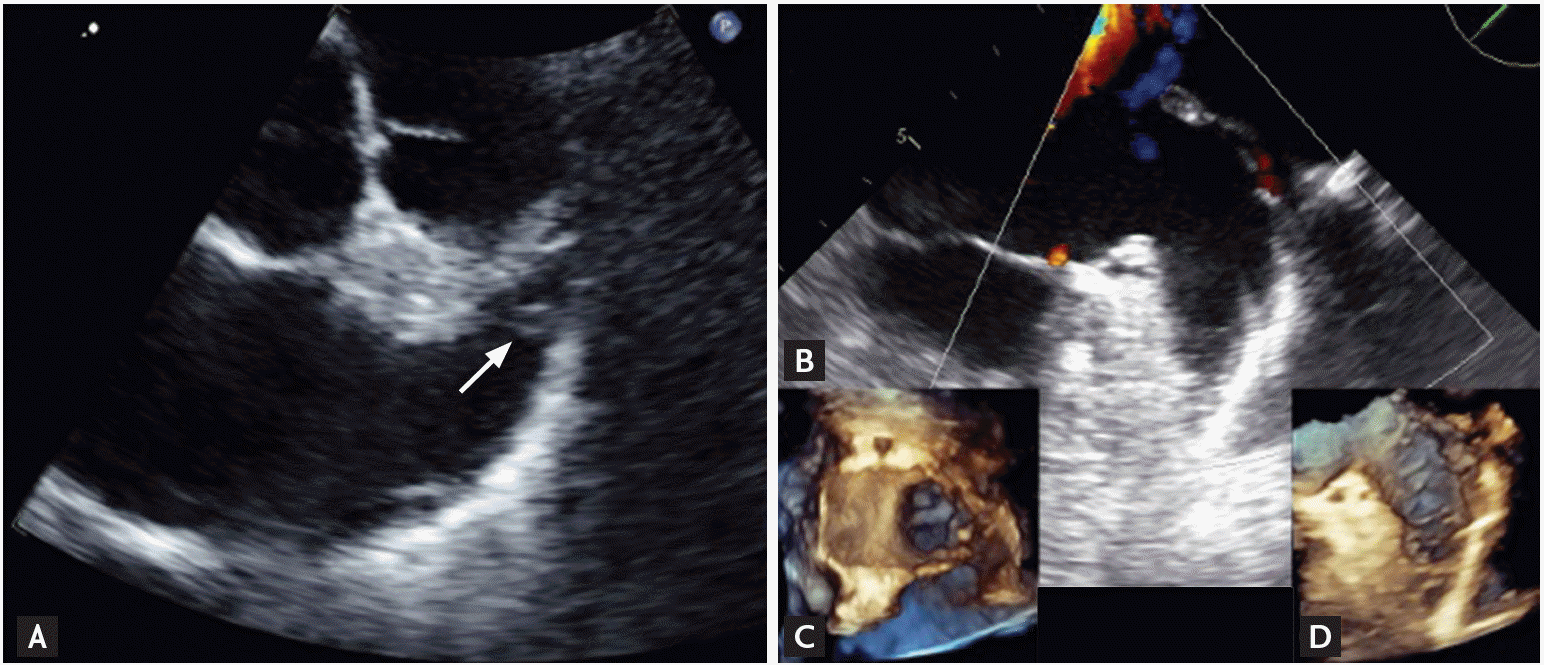To the Editor,
Non-valvular atrial fibrillation (AF) increases the risk of strokes by approximately 5 fold [1]. The atrial thrombi associated with AF are seen within the left atrial appendage (LAA) in most cases (> 90%) [2]. Anticoagulation with a vitamin-K antagonist (VKA) is recommended to prevent thromboembolic complications and to resolve thrombi [3]. Since 2010, several new (novel) oral anticoagulants (NOACs) have been developed that directly inhibit thrombin or coagulation factor-Xa. Those have emerged as alternative prophylactic agents to VKA [4]. However, data on the effect of NOACs regarding atrial thrombi related to non-valvular AF is limited. We report the resolution of LAA thrombi in two patients with persistent AF by using apixaban.
A 78-year-old woman who had a long history of hypertension, which had been well controlled, presented with AF of an unknown duration. She underwent a 12 lead electrocardiogram (ECG) for preoperative screening for spinal surgery. She was found to be in persistent AF, and an ECG had not been performed for several years. The transthoracic echocardiogram (TTE) showed a thickened mitral valve with mild to moderate regurgitation and a normal left ventricular ejection fraction. But the etiology of the mitral regurgitation could not be clarified at that time. The modified short axis view revealed mobile thrombi (1.22 × 1.6 cm) in the LAA (Fig. 1A). Her CHA2DS2VASc score was 4. She was admitted to the hospital for intravenous heparinization concomitant to starting VKA since she was not on anticoagulation. Fractionated heparin was administered intravenously for 7 days with warfarin and the activated partial thromboplastin time was kept two to three times longer than the reference value. The patient was discharged from the hospital with a final international normalized ratio (INR) of 1.9, which was expected to be higher than 2 in the next day. However, the patient returned to the clinic 5 days later with an INR of 1.51. The follow-up TTE showed smaller but remaining thrombi in the LAA. We discussed the risk of prolonged duration of the ineffective anticoagulation without coverage of heparin, and the time to achieve the therapeutic INR could be unpredictable. We also discussed that NOACs have rapid onset of action, which provide immediate anticoagulation effects minimizing the duration of ineffective anticoagulation predictably. After that, we agreed to switch warfarin to apixaban (5 mg twice daily). The transesophageal echocardiogram (TEE) performed 6 weeks after apixaban treatment showed complete resolution of the thrombi in the LAA without any clinical systemic thromboembolic complications (Fig. 1B).
Another patient was a 79-year-old woman, who presented with aggravated dyspnea on exertion (DOE). She was also found to be in persistent AF, and the last available ECG (7 years ago) showed sinus rhythm. The CHA2DS2VASc score was 4 with hypertension. The short axis view of the TTE revealed small thrombi (0.66 × 0.51 cm) within the LAA (Fig. 2A). She was not on anticoagulant, either. The degree of her DOE was New York Heart Association class II to III, which did not need hospitalization for treatment. We discussed that the predictable anticoagulation effects of NOAC, which could eliminate the concomitant heparin coverage that may need hospitalization. We shared the experience of the treatment result of the first patient. The patient and her family decided to choose NOAC. The apixaban (5 mg twice daily) was chosen as an anticoagulant and was prescribed from the outpatient clinic. The TEE after 5 weeks of treatment showed complete resolution of the thrombi in the LAA (Fig. 2B-2D).
VKA has a slower onset of action and the indirect anticoagulation activity depends on the clearance of the vitamin-K dependent clotting factors and dietary vitamin-K intake. The NOACs offer significant advantages over VKA with a rapid onset and offset of action, absence of an affect of diet on their action, and fewer drug interactions. Unresolved thrombi in the LAA could result in a subsequent higher risk of thromboembolic events [5]. In order to minimize the risk, it would be very important to resolve the thrombi as soon as possible.
Apixaban treatment effectively resolved the LAA thrombi and furthermore, shortened the time to achieve the effective anticoagulation than VKA, which could shorten the overall time to resolve the thrombi. Therefore, NOACs could be considered as the alternative anticoagulant of VKA for patients with non-valvular AF and atrial thrombi. Further investigation, in a larger population, of the efficacy of NOACs for resolving thrombi is warranted.





 PDF Links
PDF Links PubReader
PubReader ePub Link
ePub Link Full text via DOI
Full text via DOI Download Citation
Download Citation Print
Print





